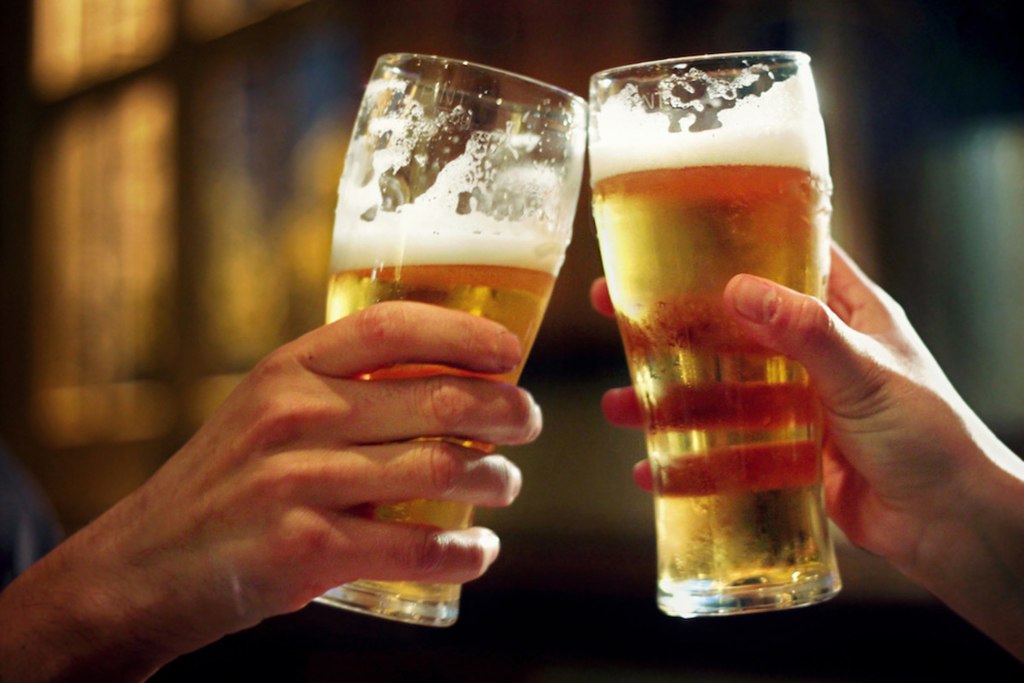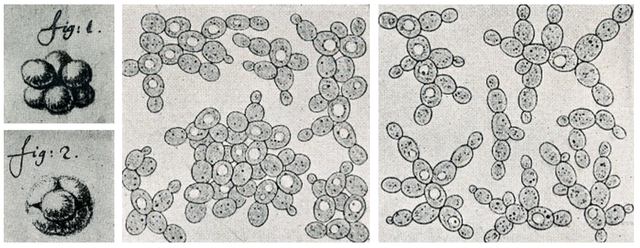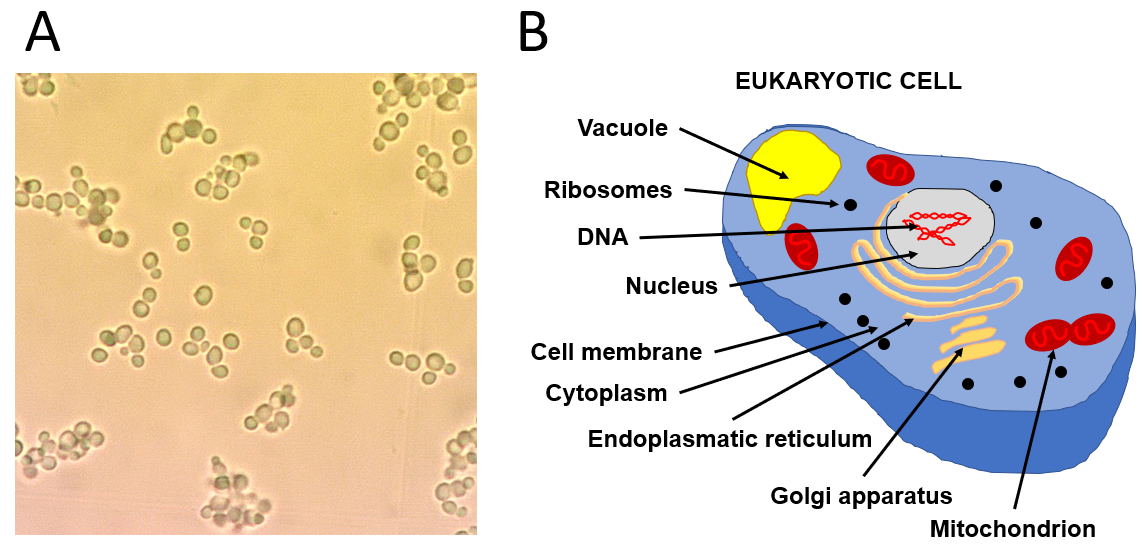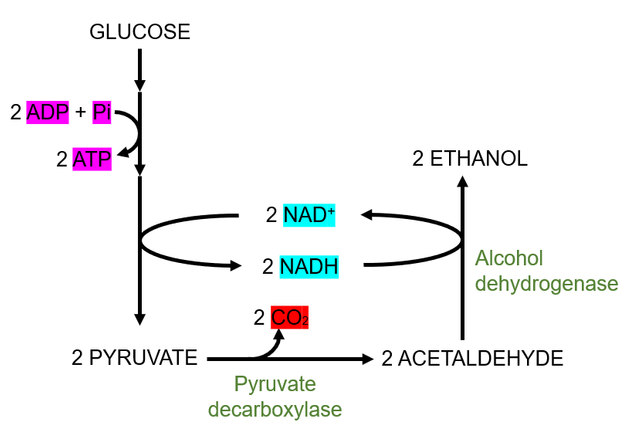Queen of fermentation – Saccharomyces cerevisiae (Microbiology #3)
Hi guys! Today I would like to introduce you to this lovely organism that we all know. I am talking about budding yeast – Saccharomyces cerevisiae, that is essential for the making of bread, wine, beer and other products.
Read on and find out more about one the first domesticated organisms on Earth.

Little bit of history
Saccharomyces cerevisiae is truly one of the oldest biological tools used by humans. Even though it was named only in 1837 its usage goes way back into the past. S. cerevisiae was used as far as 6000 B.C. by ancient Sumerians and Egyptians to create bread, beer or wine. Even its name is derived from Greek word saccharomyces, meaning sugar-fungus and Ceres - Roman the goddess of agriculture. First observation of budding yeast happened in 1680 by Antonie van Leeuwenhoek (more about him HERE, that used simple microscope to describe the morphology of yeast. Nowadays we also use this organism to not only create wine or beer, but carbon dioxide or glycerol. Till today is S. cerevisiae integral component of our everyday lives and can be found in almost every household.

Source 1 2
Little bit of biology
Yeast S. cerevisiae is unicellular eukaryotic microorganism belonging to kingdom Fungi and division Ascomycota. It contains 16 chromosomes in its haploid state and size of its nuclear genome is around 12 Mb and has around 5300 protein-coding genes. Whoa whoa whoa. Allright if you are unfamiliar with these terms, keep reading, if you know them, then jump to next paragraph. Unicellular eukaryotic microorganism - meaning that one cell forms whole organism, eukaryotic is defined HERE) and microorganism, basically that it is not visible by naked eye and you have to use microscope to see it. Now to kingdoms and divisions. Biology loves to categorize everything into some groups and Fungi and Ascomycota are basically names of these groups that S. cerevisiae belongs to. Another thing - chromosomes. Hmm. I should probably write article about this. But, chromosomes are complexes made by DNA and proteins and basically contain genes. Genes are parts of DNA that define some characteristics of organism, in humans for example eye colour and well, basically everything. Protein-coding genes are genes that give rise to proteins - yeast have 5300 of them and humans for example have around 20 000. And this number 12 Mb that talks about size of the genome (all the DNA on all chromosomes) is in base pairs, more specifically mega base pairs (so 12 Mb means 12 000 000 base pairs). What are base pairs? Well our DNA (deoxyribonucleic acid) is created from tiny blocks. Like a chain. And one base is one loop or segment of this chain. But as you know this DNA is in the form of double-helix (I bet you did all see DNA, those two spirals, right?). And to make these two chains stick together there are bonds between the segments (bases), so they practically form pairs. And thus, you know what a base-pair is and hopefully understand it better now. Phew. This was HARD. I have to do a post about it... :D
So, lets continue, yeast, right. Morphologically the cells of S. cerevisiae may differ in shape, size or colour, but normally have round shape and do this characteristic budding - hence the name budding yeast. The diameter of one cell is typically around 5 to 10 µm. As same as with all eukaryotic organisms their cells are complex and compartmentalized. It can be haploid or diploid, meaning that it can either have 16 chromosomes or 16 pairs of chromosomes.

Fermentation
S. cerevisiae is heterotrophic organism, meaning that it needs external carbon source. This carbon source is then degraded by series of metabolic processes to simple components that can be later utilized in variety of different ways. It can be also termed as facultative anaerobic organism, this means that it can survive with or without oxygen. Primary carbon source of S. cerevisiae is glucose and the preferred process of energy creation is fermentation. During alcoholic fermentation (see scheme bellow) is glucose converted by process termed glycolysis to pyruvate (this creates ATP -> ATP = energy) which is later decarboxylated to acetaldehyde. In the next step NADH is oxidized and acetaldehyde is converted to ethanol with the help from enzyme alcohol dehydrogenase. The regeneration of NADH is important to keep glycolysis running as this is the only way the organism is able to generate energy (ATP). Energetic yield from one molecule of glucose is only two molecules of ATP (so really not that efficient).
But. We love that it does utilize fermentation. Because we love beer. No yeast, no beer. Thank you, S. cerevisiae.

Alcohol fermentation by yeast.
Great research tool
This yeast is also important biological model organism. Even I work with it. First time that S. cerevisiae was used as a model organism was in the 1930s. Since then there has been an explosion of publications that used it for research of cell architecture as well as basic cell processes. Btw, model organism means that you can use that organism as a model of something (disease, process, etc.) that can be also applied to other organisms. In the 1950s the application broadened from genetics to molecular biology as well. Yeast transformation (creation of GMO yeast) in 1978 resulted in variety of yeast strains with different properties. Another great thing about S. cerevisiae was the fact that majority of cellular biological processes is conserved from yeast to higher eukaryotes, so many discoveries could also be applied on humans. And what greater discoveries are there then those that were awarded with Nobel prize. Here are some researchers that used S. cerevisiae and won this prize due to their discoveries:
Eduard Buchner - won in 1907 for his theory of non-cellular fermentation
Leland H. Hartwell - won in 2001 for his discoveries in regulation of cell-cycle
Randy W. Schekman - won in 2013 for his discoveries in mechanisms of vesicular transport
Yoshinori Ohsumi - won in 2016 for his discoveries in autophagy
All these discoveries only underline the importance of Saccharomyces cerevisiae as a research tool.
Long live the queen
So, guys, I hope you did learn at least something new today. It was a tad difficult to explain some terminology, soo if you have any questions or something was unclear, please write that in the comments. And if you did enjoy reading this article and want more articles like this, then leave comment, or upvote, resteem, etc. Any support is appreciated! :)
Have a great day!
Sources:
Yeast – article on Wikipedia
List of Nobel prize winners
Feldmann et al. – Yeast: Molecular and Cell Biology– great book that I recommend everyone interested in the subject to read :)
Thank you! :)
It seems interresting i followed and up voted. Please keep doing your great work
Thank you very much! I am glad that you liked it. :)